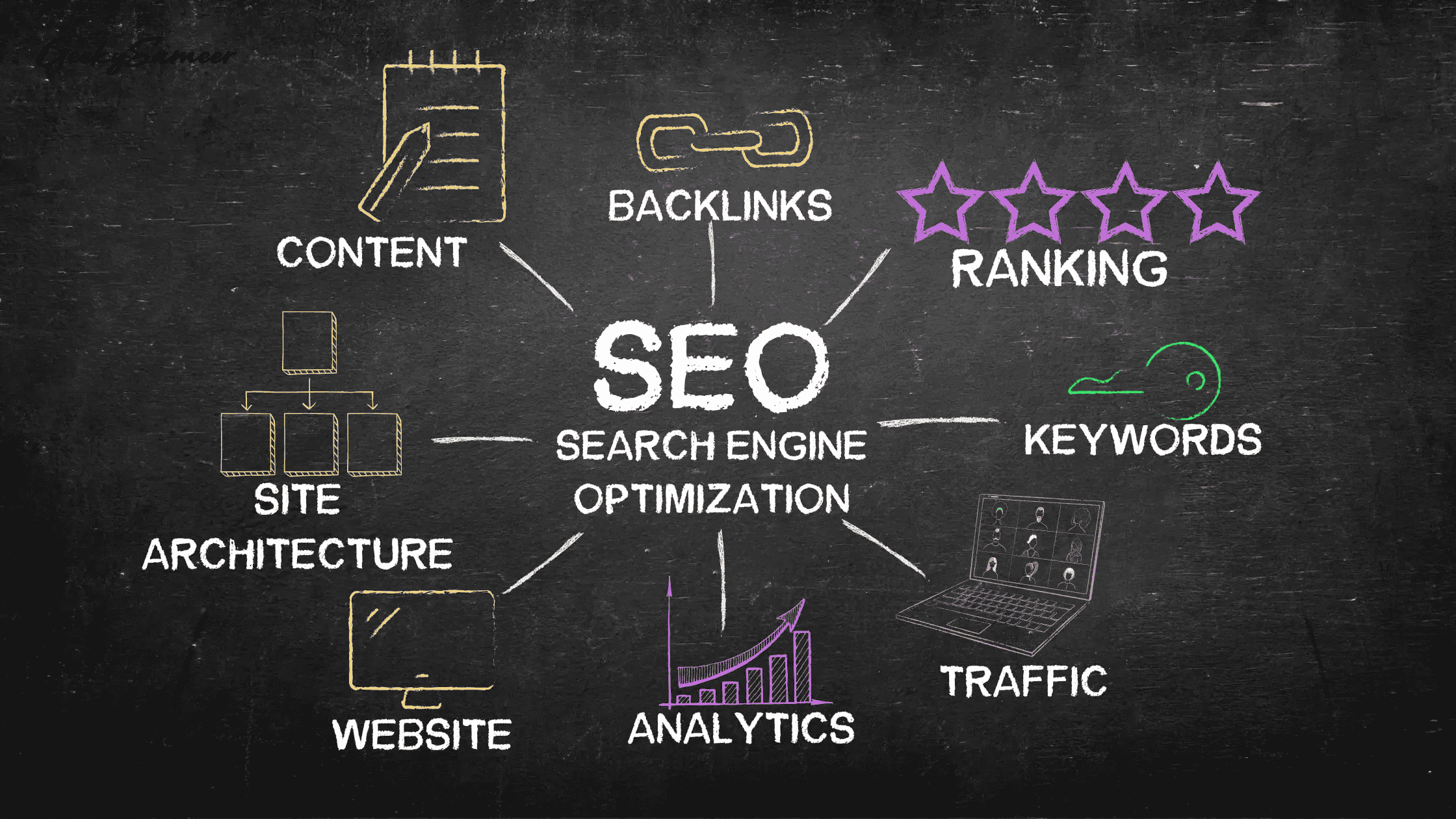vPower of B2B Content: Overcoming 5 Common Challenges for Effective Marketing
Many businesses need help to create compelling content that delivers the desired results. In this article, we will explore five common challenges faced by B2B organizations in their content marketing efforts and provide practical solutions to overcome them.
Insufficient Understanding of the Target Audience
One of the fundamental reasons behind lackluster B2B content is a limited understanding of the target audience. To create impactful content, businesses must gain deep insights into their target market's pain points, challenges, and aspirations. This requires thorough market research, persona development, and a commitment to ongoing customer feedback.
These personas should encompass demographic information, job roles, pain points, goals, and preferred content formats. Regularly engage with your audience through surveys, interviews, and social media interactions to gather valuable feedback and refine your content strategy accordingly. By aligning your content with your target audience's needs, you can deliver helpful, relevant information that resonates with them.
Inadequate Storytelling and Engagement
B2B content often needs more engaging storytelling, making it feel dry and uninteresting to the audience. Compelling storytelling humanizes your brand, captures attention, and creates an emotional connection with your readers.
Develop compelling narratives that resonate with your target audience to overcome this challenge. Start by identifying your unique value proposition and crafting a consistent brand story that highlights the problem-solving nature of your products or services. Use case studies, testimonials, and success stories to demonstrate how your offerings have positively impacted you.
Neglecting the Power of Visual Content

Text-heavy B2B content often fails to engage readers effectively. Incorporating visual elements such as infographics, videos, and images can significantly enhance the appeal and impact of your content.
To address this challenge, leverage the power of visual content by incorporating relevant visuals into your B2B content strategy. Use infographics to present complex data and statistics in a visually appealing and digestible format. Create explainer videos to showcase your product features or share thought leadership content. Include high-quality images to support your written content and break up text-heavy sections.
Neglecting SEO Optimization
Another reason most B2B content needs to catch up is the need for SEO optimization. With implementing SEO best practices, your content may be able to rank well in search engine results and reach your target audience effectively.
To address this challenge, conduct keyword research to identify relevant keywords and phrases your target audience is searching for. Incorporate these keywords strategically throughout your content, including titles, headings, meta descriptions, and body text. However, ensure that the keyword usage feels natural and doesn't compromise the readability and quality of your content.
Optimize your website structure, URLs, and internal linking to improve your site's visibility to search engines. Focus on creating informative and engaging meta descriptions that entice users to click through to your content. Additionally, optimize your images by using descriptive filenames and alt tags.
Invest in link-building strategies to enhance the authority and credibility of your content. Seek opportunities to earn backlinks from reputable websites in your industry through guest posting, collaboration, or content partnerships. Building a strong backlink profile can boost your content's visibility and organic rankings.
Regularly monitor your content's performance using SEO analytics tools to track keyword rankings, organic traffic, and engagement metrics. Analyze the data to identify content gaps, optimize underperforming pages, and refine your SEO strategy.
Lack of Originality and Value

B2B content must often be more original and give the audience unique value. Repurposing generic content or regurgitating industry information without adding fresh insights can lead to disengagement and disregard from your target audience.
To overcome this challenge, focus on delivering original and valuable content that stands out. Conduct in-depth research to uncover unique angles, industry trends, and emerging topics relevant to your audience. Offer fresh perspectives, data-driven insights, and actionable advice your readers can't find elsewhere.
Consider conducting interviews with industry experts, creating and selling online courses, sharing success stories, or conducting original research to provide unique and valuable content. Encourage thought leadership within your organization and share your team's expertise and experiences through blog posts, whitepapers, or webinars. This will position your brand as a trusted authority and attract a loyal following.
Additionally, engage with your audience through comments, social media interactions, and surveys to understand their pain points, challenges, and information needs. Use their feedback to shape your content strategy and provide the content they desire.
Ignoring the Power of Multimedia Formats
B2B content that relies solely on text can become monotonous and fail to capture and retain your audience's attention. Neglecting the power of multimedia formats such as videos, podcasts, and interactive content can limit your content's impact.
To address this challenge, incorporate multimedia elements into your content strategy. Create informative and visually appealing videos showcasing product demos, explaining complex concepts, or featuring customer testimonials. Launch a podcast series where you discuss industry trends, share insights, and interview industry experts. Develop interactive content such as quizzes, calculators, or interactive infographics that engage your audience and encourage participation.
Diversifying your content formats adds variety and caters to different learning preferences and consumption habits. It lets you reach a wider audience and keep them engaged with your brand.
Lack of Promotion and Distribution Strategy
Even if you create unique B2B content, it will yield the desired results with a well-defined promotion and distribution strategy. Many businesses must adequately plan how to reach and engage their target audience to focus solely on content creation.
Develop a comprehensive promotion and distribution strategy alongside your content creation efforts to overcome this challenge. Identify channels and platforms where your target audience is most active. This could include social media platforms, industry forums, relevant websites, and email newsletters. Tailor your content distribution strategy to prioritize these channels.
Leverage social media platforms to amplify your content reach. Create engaging social media posts with snippets or teasers of your content, accompanied by compelling visuals. Engage with industry influencers and thought leaders by tagging them in your posts or mentioning them in your content, increasing the chances of gaining wider exposure.
Collaborate with industry partners or complementary businesses to cross-promote each other's content. Guest posting on reputable industry websites or contributing articles to industry publications can also expand your reach and establish your brand as a trusted authority.
Implement an email marketing strategy to nurture leads and regularly communicate with your audience. Build an email subscriber list by offering valuable content upgrades or gated resources. Send personalized, targeted emails to your subscribers highlighting your latest content offerings and providing value.
Lack of Collaboration between Marketing and Sales Teams
The misalignment between marketing and sales teams is a common challenge that can hinder the effectiveness of B2B content. When these teams work in silos, it can lead to disjointed messaging, ineffective lead nurturing, and missed opportunities for conversion.
To overcome this challenge, foster collaboration and alignment between your marketing and sales teams. Encourage open communication channels and establish regular meetings to discuss content strategy, lead generation efforts, and customer insights.
Involve the sales team in content creation to gain their perspective on customer pain points, objections, and frequently asked questions. This collaboration ensures that the content addresses the needs of potential customers and provides relevant solutions.
Create a feedback loop between marketing and sales, where the sales team can provide insights on the effectiveness of content in converting leads and closing deals. This feedback can be used to refine the content strategy and optimize content for better results.
Implement a lead nurturing process that involves both marketing and sales teams. Develop content assets that cater to each stage of the buyer's journey, ensuring a seamless transition from marketing-generated leads to sales-qualified leads. By aligning content with the needs and preferences of potential customers, the collaboration between marketing and sales teams can drive better conversion rates.
Neglecting Customer Journey Mapping

One of the reasons why B2B content often falls short is the need for customer journey mapping. Failing to understand the different stages and touchpoints in the customer journey can result in content that doesn't effectively guide and engage potential buyers.
Invest time and effort in mapping the customer journey from initial awareness to conversion to address this challenge. Identify customers' touchpoints and interactions with your brand throughout their buying process.
Develop content that caters to each stage of the customer journey. At the awareness stage, focus on creating informative and educational content that addresses common pain points and introduces your brand as a solution. In the consideration stage, provide in-depth guides, comparison articles, and case studies that help prospects evaluate their options. In the decision stage, offer product demos, testimonials, and pricing information to facilitate the purchasing decision.
Ensure consistency in messaging and branding across different touchpoints. Each piece of content should seamlessly guide the buyer through the journey, reinforcing the value proposition and building trust.
Optimize content for lead nurturing by implementing marketing automation and personalized email campaigns. Deliver content that aligns with the specific stage of the customer journey and addresses the needs and concerns of each lead.
Lack of Agility and Adaptability
B2B content that fails to adapt to changing market dynamics and customer needs will likely become stagnant and ineffective—for instance, needing to adapt crypto payments and transactions on tesler app. Lack of agility and adaptability prevents businesses from staying ahead of the curve and delivering content that resonates with their target audience.
To address this challenge, adopt an agile mindset and approach to content marketing. Stay updated with industry trends, changes in customer behavior, and emerging technologies that can impact your content strategy.
Regularly assess and analyze the performance of your content. Monitor key metrics such as engagement, conversions, and customer feedback. Identify content that performs well and resonates with your audience, and adapt your strategy to create similar content in the future.
Experiment with new content formats, channels, and distribution methods. Stay open to new ideas and approaches to keep your content fresh and engaging. Embrace new technologies and tools to enhance your content creation and distribution processes. Explore using artificial intelligence, chatbots, or interactive elements to provide a more immersive and personalized content experience.
Conclusion
By addressing these common challenges faced by B2B content marketing and implementing the suggested solutions, businesses can significantly enhance the effectiveness of their content efforts. Understanding the target audience, setting clear goals, incorporating storytelling and visual elements, maintaining consistency, optimizing for SEO, delivering original value, and embracing multimedia formats are critical to creating compelling and impactful B2B content.
Remember, effective content marketing is an ongoing process that requires continuous improvement, experimentation, and adaptation. Regularly monitor and analyze your content performance, gather feedback, and refine your strategy to meet your audience's evolving needs and preferences. With a commitment to excellence and a strategic approach, you can transform your B2B content into a powerful tool for driving engagement, generating leads, and achieving business growth.






